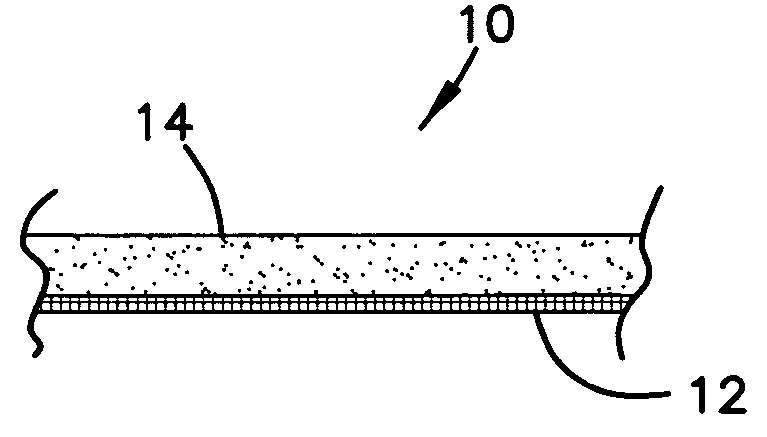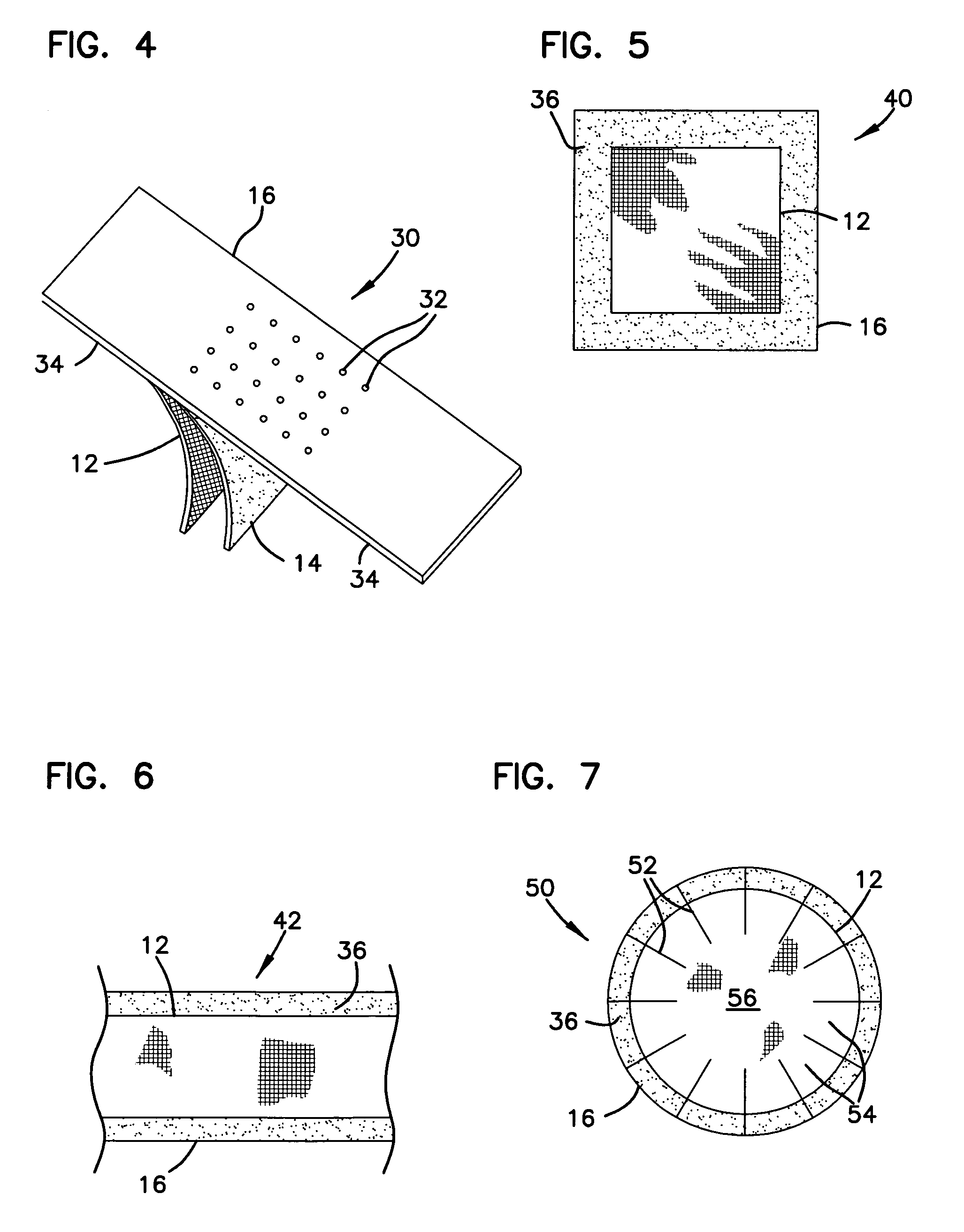Multilayer wound dressing
a wound dressing and multi-layer technology, applied in bandages, therapy, transportation and packaging, etc., can solve the problems of large silver ions, high toxic to mammalian (including human) tissues, and large silver ions that dissociate readily and produce large numbers of free silver ions,
- Summary
- Abstract
- Description
- Claims
- Application Information
AI Technical Summary
Benefits of technology
Problems solved by technology
Method used
Image
Examples
example 1
[0043]The effectiveness of warp knit silver nylon fabric (specific resistance about 1 Ω / cm) in inhibiting the growth of three common strains of bacteria (S. aureus, E. coli and P. aeruginosa) was tested in vitro. The bacterial cultures were planted in agar-filled petri dishes using the Kirby Bauer technique, one culture per dish. Sterilized 1-cm squares of the fabric were placed on the surfaces of the cultures. Every twenty-four hours, each fabric square was removed from the culture medium and replanted in a different area of the same dish. After 72 hours, the culture medium directly underneath the fabric squares was clear (i.e., the bacteria in those regions had been killed). In addition, all areas where the fabric squares had been placed previously remained clear.
example 2
[0044]The warp knit silver nylon fabric of Example 1 was found to cause dedifferentiation of mammalian cells in vitro. The observed effects were proportional to the concentration of silver ions in the culture medium and inversely proportional to distance from the fabric: the closer to the fabric, the greater the concentration of dedifferentiated cells and the greater the silver ion concentration.
example 3
[0045]The effectiveness of silver sulfadiazine cream, silver nylon fabric, and plain nylon fabric in inhibiting the bacterial growth was compared (L. Smee, “The Effectiveness of Silver Nylon Cloth and Silver Sulfadiazine Cream as Antiseptics,” Piedmont College Senior Thesis, April, 1996). Five common strains of bacteria were studied including two gram-negative strains (E. coli, P. aeruginosa) and three gram-positive strains (E. faecalis, S. aureus, S. pyogenes).
[0046]Each strain of bacterium was inoculated into three agar-filled petri dishes. Following the inoculation, three fabric disks were placed into each dish: a disk of plain nylon cloth which served as a control, a disk of silver nylon fabric, and a plain nylon disk which has been coated with silver sulfadiazine cream. Each disk had a surface area of 3.4 mm2. The dishes were incubated for seventy-two hours, and removed every twenty-four hours to measure the inhibition zone around each disk (i.e., the distance from the outer ed...
PUM
| Property | Measurement | Unit |
|---|---|---|
| Surface resistance | aaaaa | aaaaa |
| Surface resistance | aaaaa | aaaaa |
| Inhibition zone | aaaaa | aaaaa |
Abstract
Description
Claims
Application Information
 Login to View More
Login to View More - R&D
- Intellectual Property
- Life Sciences
- Materials
- Tech Scout
- Unparalleled Data Quality
- Higher Quality Content
- 60% Fewer Hallucinations
Browse by: Latest US Patents, China's latest patents, Technical Efficacy Thesaurus, Application Domain, Technology Topic, Popular Technical Reports.
© 2025 PatSnap. All rights reserved.Legal|Privacy policy|Modern Slavery Act Transparency Statement|Sitemap|About US| Contact US: help@patsnap.com



